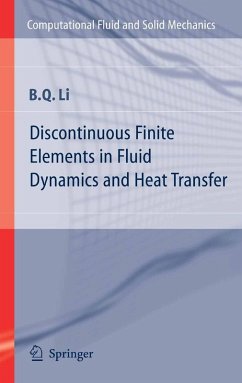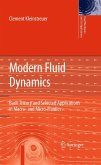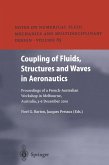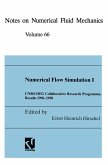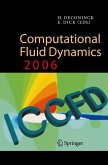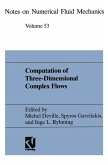The discontinuous finite element method (also known as the discontinuous Galerkin method) embodies the advantages of both finite element and finite difference methods. It can be used in convection-dominant applications while maintaining geometric flexibility and higher local approximations throught the use of higer-order elements. Element-by element connection propagates the effect of boundary conditions and the local formulation obviates the need for global matrix assembly. All of this adds up to a method which is not unduly memory-intensive and uniquely useful for working with computational dynamics, heat transfer and fluid flow calculations.
Discontinuous Finite Elements in Fluid Dynamics and Heat Transfer offers its readers a systematic and practical introduction to the discontinuous finite element method. It moves from a brief review of the fundamental laws and equations governing thermal and fluid systems, through a discussion of different approaches to the formulation of discontinuous finite element solutions for boundary and initial value problems, to their applicaton in a variety of thermal-system and fluid-related problems, including:
. heat conduction problems;
. convection-dominant problems;
. computational compressible flows;
. external radiation problems;
. internal radiation and radiative transfer;
. free- and moving-boundary problems;
. micro- and nanoscale heat transfer and fluid flow;
. thermal fluid flow under the influence of applied magnetic fields.
Mesh generation and adaptivity, parellelization algorithms and a priori and a posteriori error analysis are also introduced and explained, rounding out a comprehensive review of the subject.
Each chapter features worked examples and exercises illustrating situations ranging from simple benchmarks to practical engineeringquestions.
This textbook is written to form the foundations of senior undergraduate and graduate learning and also provides scientists, applied mathematicians and research engineers with a thorough treatment of basic concepts, specific techniques and methods for the use of discontinuous Galerkin methods in computational fluid dynamics and heat transfer applications.
Discontinuous Finite Elements in Fluid Dynamics and Heat Transfer offers its readers a systematic and practical introduction to the discontinuous finite element method. It moves from a brief review of the fundamental laws and equations governing thermal and fluid systems, through a discussion of different approaches to the formulation of discontinuous finite element solutions for boundary and initial value problems, to their applicaton in a variety of thermal-system and fluid-related problems, including:
. heat conduction problems;
. convection-dominant problems;
. computational compressible flows;
. external radiation problems;
. internal radiation and radiative transfer;
. free- and moving-boundary problems;
. micro- and nanoscale heat transfer and fluid flow;
. thermal fluid flow under the influence of applied magnetic fields.
Mesh generation and adaptivity, parellelization algorithms and a priori and a posteriori error analysis are also introduced and explained, rounding out a comprehensive review of the subject.
Each chapter features worked examples and exercises illustrating situations ranging from simple benchmarks to practical engineeringquestions.
This textbook is written to form the foundations of senior undergraduate and graduate learning and also provides scientists, applied mathematicians and research engineers with a thorough treatment of basic concepts, specific techniques and methods for the use of discontinuous Galerkin methods in computational fluid dynamics and heat transfer applications.
Dieser Download kann aus rechtlichen Gründen nur mit Rechnungsadresse in A, B, BG, CY, CZ, D, DK, EW, E, FIN, F, GR, HR, H, IRL, I, LT, L, LR, M, NL, PL, P, R, S, SLO, SK ausgeliefert werden.
From the reviews: "This monograph is written as an introductory textbook on the discontinuous finite element method for senior undergraduate and graduate students in the area of thermal science and fluid dynamics. The book covers the applications of the method for the simulation of both macroscopic and micro/nanoscopic fluid flows and heat transfer phenomena. ... present textbook provides scientists, applied mathematicians and research engineerings with a throughout treatment of basic concepts and specific techniques for the use of discontinuous Galerkin methods in computational fluid dynamics and heat transfer." (Titus Petrila, Zentralblatt MATH, Vol. 1110 (12), 2007) "Li...offers a very rigorous, accurate introduction to this topic...This book is quite comprehensive and mathematically rigorous enough to impart the basics of discontinuous finite element methods...Summing Up: Recommended."(S. E. Haupt, Choice, November 2006) "This book contains a rather detailed description of the discontinuous finite element methods (mainly discontinuous Galerkin methods) in the context of fluid dynamics and heat transfer. ... The book under review is written for practitioners of the discontinuous finite element method in science and engineering. ... a valuable addition to the literature. It is suitable to serve as a textbook for a graduate course, or a reference book for researchers or engineers who would like to learn this effective numerical method ... ." (Chi-Wang Shu, SIAM Review, Vol. 49 (1), 2007)

